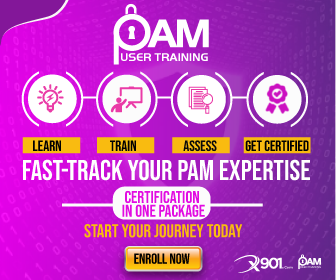PAM Strategies for IT Professionals

YouTube
Just in Time Permissions Explained #Delinea #PAM #CyberSecurity

About Company
Introduction to Multi-Cloud Environments
Although multi-cloud setups have many advantages, they also add complexity, particularly when it comes to identity and access management.
Cloud Infrastructure Entitlement Management (CIEM) is useful in this situation. To improve security and compliance, CIEM manages cloud identities and permissions to make sure that the proper people and services have the right amount of access.
Multi-Cloud Environments
The Challenges of Multi-Cloud Environments
Complex Identity Management
Inconsistent Security Policies
Regulatory Adherence
Monitoring and Visibility
Our Services
Navigating Multi-Cloud Environments: PAM Strategies for IT Professionals
Introduction to Multi-Cloud Environments
The Challenges of Multi-Cloud Environments
Complex Identity Management:
Managing identities across different cloud platforms can be daunting. Each cloud provider has its own set of identity and access management (IAM) tools and policies, making it challenging to maintain a unified and consistent approach.
Inconsistent Security Policies:
Ensuring consistent security policies across multiple cloud environments is a critical challenge. Different clouds may have varying security configurations, leading to potential gaps and vulnerabilities.
Visibility and Monitoring:
Achieving comprehensive visibility and monitoring in a multi-cloud environment is complex. IT teams need to keep track of user activities, access patterns, and potential security incidents across diverse platforms.
Regulatory Compliance:
Maintaining compliance with industry regulations and standards (such as GDPR, HIPAA, and SOC 2) becomes more complicated when dealing with multiple cloud environments, each with its own compliance requirements and certifications.
PAM Strategies for IT Professionals
1. Unified Identity and Access Management
Centralized IAM Solutions:
Utilize centralized IAM solutions that integrate with various cloud providers. Tools like Okta, Auth0, and Azure Active Directory provide a single pane of glass for managing identities and access controls.
Single Sign-On (SSO):
Implement SSO to streamline authentication processes and reduce the risk of password-related security issues.
Multi-Factor Authentication (MFA):
Enforce MFA across all cloud platforms to add an extra layer of security.


2. Consistent Security Policies and Automation
Policy-as-Code:
Use policy-as-code tools like HashiCorp Sentinel or Open Policy Agent (OPA) to define and enforce security policies programmatically. This ensures that policies are consistently applied across all clouds.
Automated Compliance Checks:
Implement automated compliance checks using tools like AWS Config, Azure Policy, and GCP’s Policy Intelligence. These tools help in continuously monitoring and enforcing security policies.
YouTube
OATH OTP MFA Explained: Easy Setup Guide for Stronger Security
Enhanced Visibility and Monitoring

Centralized Logging and Monitoring:
Use centralized logging and monitoring solutions such as Splunk, ELK Stack, or CloudWatch to aggregate logs and metrics from all cloud providers. This provides a holistic view of your cloud environment.

Cloud Security Posture Management (CSPM):
Employ CSPM tools like Prisma Cloud, Dome9, or Azure Security Center to continuously monitor cloud environments for misconfigurations and potential security risks.
Continuous Access Reviews and Least Privilege

Access Reviews:
Conduct regular access reviews to ensure that only authorized users and services have the necessary permissions. Tools like AWS IAM Access Analyzer, Google Cloud IAM Policy Analyzer, and Azure AD Privileged Identity Management can assist in this process.

Role-Based Access Control (RBAC):
Implement RBAC to manage permissions based on roles rather than individual users, simplifying the management of access controls.
Training and Awareness

Regular Training Programs:
Conduct regular training sessions and workshops to keep your team updated on the latest tools, technologies, and security practices.

Certifications:
Encourage team members to obtain relevant certifications from cloud providers, such as AWS Certified Solutions Architect, Google Cloud Professional Cloud Architect, and Microsoft Certified: Azure Solutions Architect Expert.
Conclusion
A deliberate strategy is necessary to efficiently manage identities, permissions, and security policies when navigating multi-cloud systems. IT workers may improve security, guarantee compliance, and streamline the administration of their multi-cloud infrastructures by putting strong CIEM strategies into place.
A good CIEM approach must have unified IAM, consistent security policies, improved visibility, constant access evaluations, and continuing training. Organizations can maximize the benefits of multi-cloud setups while lowering risks and complexity by concentrating on these areas.
CIEM
PAM Strategies for Small Business Cloud Storage Usage
Understanding CIEM
Challenges for Small Businesses
Limited IT Resources:
Data Security:
Compliance:
Access Management:
YouTube
Delinea Platform Multi Factor Authentication Everywhere
CIEM Strategies
PAM Strategies for Small Businesses
To manage identities and access effectively, small businesses should adopt a centralized identity management system. Here’s how:
- Unified IAM Platform: Use a unified IAM platform like Microsoft Azure Active Directory, Okta, or Google Workspace. These platforms offer centralized control over user identities and access permissions.
- Single Sign-On (SSO): Implement SSO to streamline access to multiple cloud applications with one set of login credentials. This not only simplifies the user experience but also enhances security.
- Multi-Factor Authentication (MFA): Enforce MFA for all users to add an extra layer of security. This helps protect against unauthorized access even if login credentials are compromised.
Implementing RBAC is essential for managing permissions effectively:
- Define Roles Clearly: Create roles based on job functions within the organization (e.g., admin, finance, sales). Each role should have specific permissions tailored to its needs.
- Assign Roles Carefully: Assign users to roles based on their responsibilities. Regularly review and update role assignments to ensure they reflect current job functions.
- Principle of Least Privilege: Ensure that each role has the minimum permissions necessary to perform its tasks. Avoid granting excessive permissions to reduce the risk of data breaches.
Automation can significantly ease the burden of managing cloud storage security:
- Policy-as-Code: Use policy-as-code tools like AWS Config, Azure Policy, or Google Cloud’s Policy Intelligence to define and enforce security policies programmatically. This ensures consistent policy application across your cloud environment.
- Automated Compliance Checks: Implement automated compliance checks to continuously monitor your cloud storage for adherence to security policies and compliance requirements. Tools like Cloud Custodian or Dome9 can be very effective in this regard.
Conducting regular reviews and audits is crucial to maintaining secure access controls:
- Periodic Access Reviews: Schedule regular reviews of access permissions to ensure they are up-to-date and appropriate. This helps identify and revoke unnecessary permissions.
- Audit Logs: Maintain detailed audit logs of all access and permission changes. Regularly review these logs to detect any suspicious activity or potential security incidents.
Encrypting data is a fundamental security measure:
- Encryption at Rest: Ensure that all data stored in the cloud is encrypted at rest. Most cloud providers offer built-in encryption options, such as AWS KMS, Azure Key Vault, and Google Cloud KMS.
- Encryption in Transit: Use encryption protocols like SSL/TLS to protect data in transit between your cloud storage and users.
Educating your employees about cloud security best practices is essential:
- Regular Training: Conduct regular training sessions on cloud security, data protection, and the importance of following security policies.
- Security Awareness: Foster a culture of security awareness within your organization. Encourage employees to report suspicious activities and follow secure practices.
Ensuring data security and efficiently managing cloud storage are critical tasks for small enterprises. By putting strong CIEM procedures into place, you can manage identities and permissions more effectively, lowering the chance of data breaches and guaranteeing adherence to industry standards. Small firms can safely take advantage of cloud storage by centralizing identity management, implementing role-based access control, automating policy enforcement, carrying out frequent access reviews, encrypting data, and providing employee training.
By adopting these CIEM techniques, you may improve your cloud security posture while streamlining processes and freeing up time for expansion and innovation.









